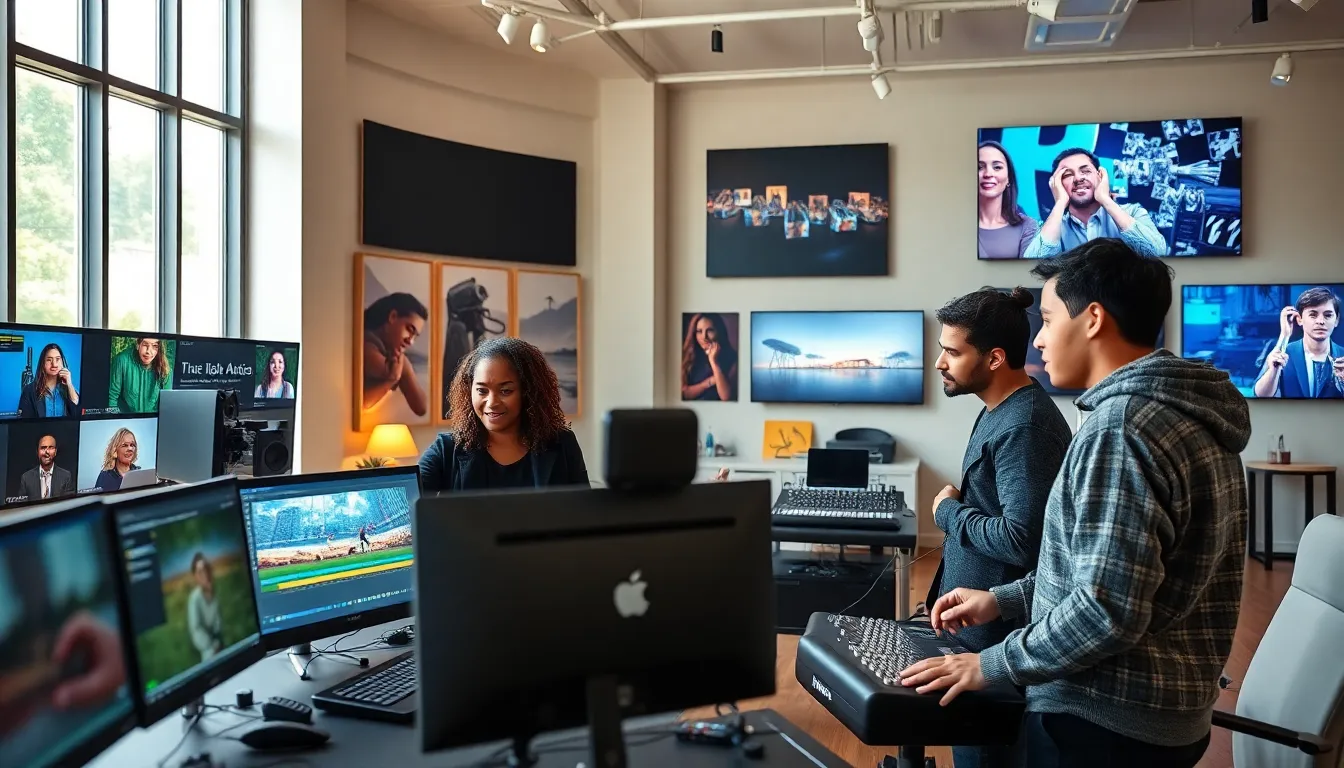In a world where creativity meets technology, arts audio/video technology and communications stand at the forefront of transformation. Whether it’s a gripping performance or an evocative film, these innovations not only deepen engagement but also stretch the boundaries of what’s possible. Ever wondered how your favorite artist seamlessly blends sound and vision, all while making it look effortless? Buckle up. This article dives into the dazzling realm of audio/video technology, where every click and clap brings a new layer of artistry. Get ready to explore how communication plays a vital role, the innovative applications sparking excitement, and the challenges that lie ahead. Let’s embark on this exciting journey through the arts.
Table of Contents
ToggleThe Evolution Of Audio/Video Technology In The Arts

The journey of audio/video technology in the arts is a fascinating tale of innovation and creativity. From the invention of the phonograph in the late 19th century, which turned sound into tangible grooves, to today’s high-definition video art installations, technology has consistently shaped the way art is produced and consumed. Artists have leveraged advancements like VHS, digital video, and high-definition audio to tell stories that captivate audiences in unprecedented ways.
Television brought visuals into homes, yet it was the internet that revolutionized access to arts media. Streaming services and social media platforms enable artists to reach global audiences while bypassing traditional distribution models. These technological advancements sparked a new era in arts, allowing creators from all walks of life to express themselves freely and engage with viewers in real-time. This evolution is not just about tools: it’s about transforming the very essence of artistic expression.
Key Components Of Audio/Video Technology
Understanding the core elements of audio/video technology in the arts is essential for appreciating its impact. Here are the key components:
- Cameras: From DSLRs to cinema cameras, these devices capture the essence of a moment. Sophisticated sensors and lenses allow for breathtaking visuals that enhance the storytelling experience.
- Audio Equipment: High-quality microphones, mixers, and speakers deliver sound that complements visual aesthetics. The nuances of a whisper or a crescendo can dramatically alter audience experiences.
- Editing Software: Tools like Adobe Premiere Pro and Final Cut Pro allow artists to refine their work, blending audio and video seamlessly to create a compelling narrative.
- Display Technology: From LCD screens to immersive projection setups, the way artworks are presented can elevate the viewing experience significantly.
- Streaming Services: Platforms like YouTube, Vimeo, and Twitch enable artists to distribute their work widely and interactively, catering to an audience eager for access to fresh content.
Each of these components plays a crucial role in the creation and appreciation of audiovisual art.
The Role Of Communication In Arts Technology
Communication acts as the backbone of arts audio/video technology, facilitating collaboration and connection among artists, audiences, and technicians. Effective communication within a creative team can spell the difference between a lackluster project and a groundbreaking achievement. Artists often communicate their vision to technicians, ensuring that sound and visuals work in harmony.
Also, communication extends beyond the studio: social platforms allow artists to engage directly with their audience. This two-way dialogue fosters community and enhances the visibility of their work, driving innovation and collaboration. Eventually, the impact of art is magnified when artists effectively communicate their messages, allowing viewers to connect emotionally and intellectually.
Innovative Applications In The Arts
The arts landscape has become a playground for innovation, especially with the integration of audio/video technology. Some notable applications include:
- Virtual Reality (VR): Artists use VR to transport audiences into immersive worlds, offering experiences that transcend conventional boundaries. This technology allows viewers to interact with the artwork and become part of the narrative.
- Augmented Reality (AR): By overlaying digital media on the physical world, AR provides an enriched viewing experience. Museums are utilizing AR to enhance exhibits, bringing history to life for visitors.
- Interactive Installations: These pieces invite audience participation, creating a dynamic art experience. Sensors detect movement, altering the artwork based on viewer engagement and prompting a personal connection to the art.
- Live Streaming and Remote Collaborations: The pandemic accelerated the adoption of live streaming performances and digital collaborations, bringing artists together from all corners of the globe and expanding art into digital spaces.
These innovative applications are not just trends, they represent a shift in how art is created and experienced in the digital age.
Challenges And Future Trends In Arts Audio/Video Technology
Even though significant advancements, the arts audio/video sector faces challenges that could influence its future. For instance, the constant evolution of technology requires artists and technicians to stay updated, often necessitating ongoing education to master new tools and techniques.
Another hurdle is the digital divide: while technology can democratize access to art, there are still barriers for many artists lacking resources or technical knowledge. Also, with rapid advancements come issues related to copyright and intellectual property, making it crucial for creators to navigate legal landscapes carefully.
As for future trends, we can expect:
- Increased Integration of AI: AI will likely play an instrumental role in helping artists generate concepts, refine works, and even personalize experiences for viewers.
- Sustainability Initiatives: As environmental consciousness rises, artists and producers will enhance sustainability in their practices. This shift could lead to greener materials and more environmentally friendly production methods.
- Rise of NFT Art: Non-fungible tokens have opened a new avenue for artists to monetize their work, allowing digital pieces to gain value in a way that traditional art has enjoyed for centuries.
Navigating these challenges while embracing new trends will shape the future of arts audio/video technology significantly.


